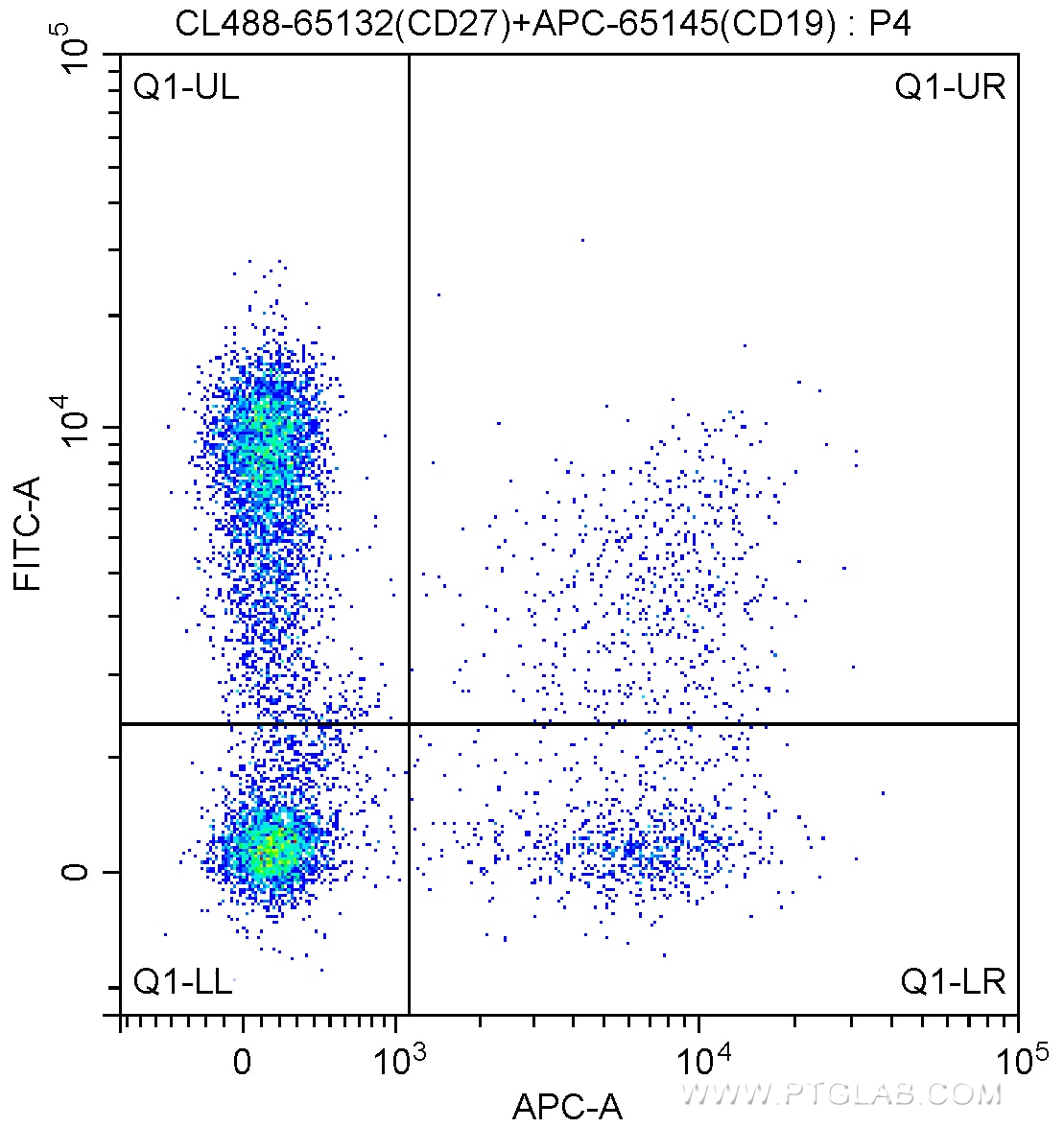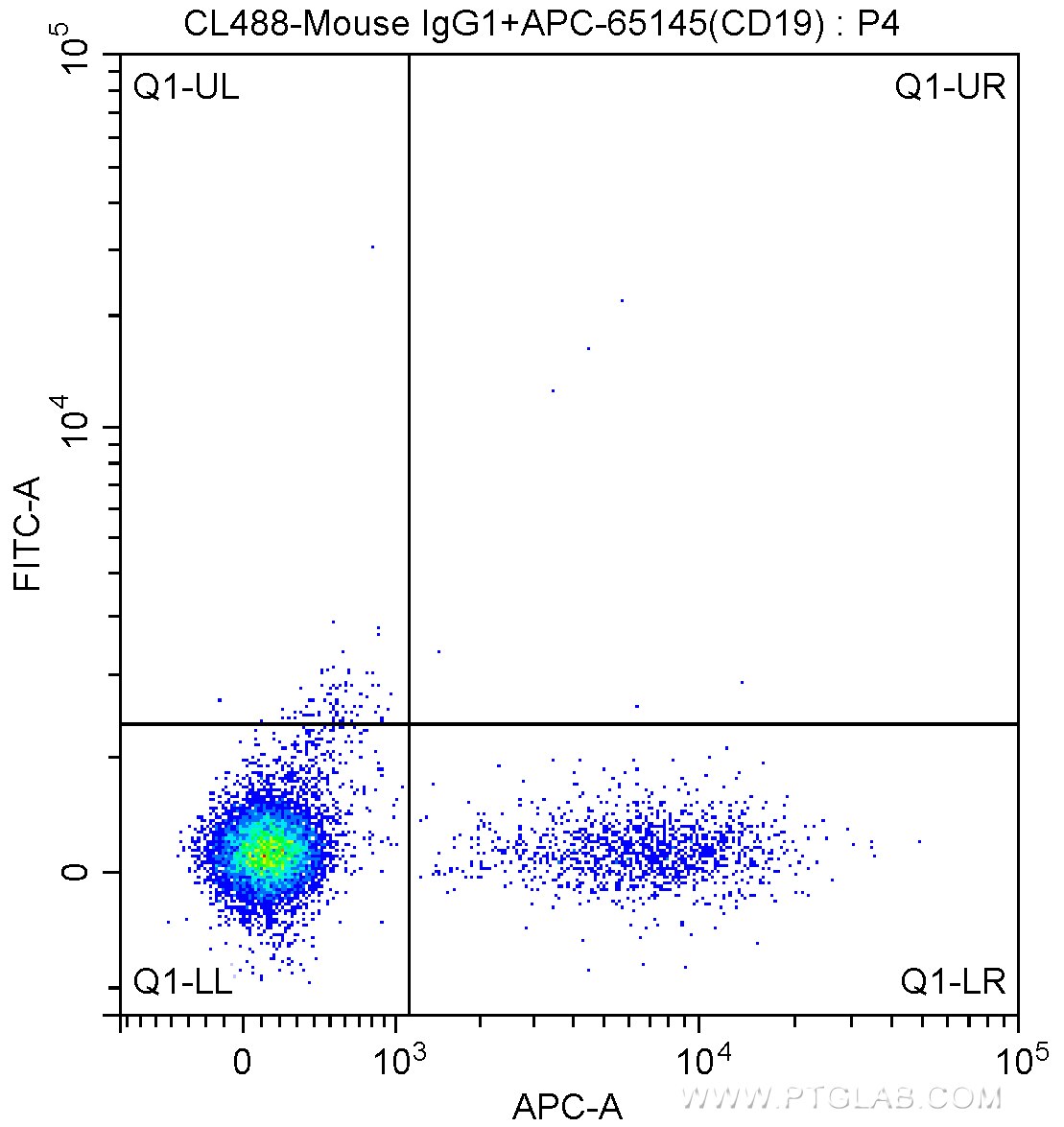Tested Applications
| Positive FC detected in | human peripheral blood lymphocytes |
Recommended dilution
| Application | Dilution |
|---|---|
| Flow Cytometry (FC) | FC : 5 ul per 10^6 cells in 100 μl suspension |
| This reagent has been pre-titrated and tested for flow cytometric analysis. The suggested use of this reagent is 5 µl per 10^6 cells in a 100 µl suspension or 5 µl per 100 µl of whole blood. | |
| Sample-dependent, Check data in validation data gallery. | |
Product Information
CL488-65132 targets CD27 in FC applications and shows reactivity with Human samples.
| Tested Reactivity | Human |
| Host / Isotype | Mouse / IgG1 |
| Class | Monoclonal |
| Type | Antibody |
| Immunogen |
N/A Predict reactive species |
| Full Name | CD27 molecule |
| Calculated Molecular Weight | 29 kDa |
| GenBank Accession Number | BC012160 |
| Gene Symbol | CD27 |
| Gene ID (NCBI) | 939 |
| ENSEMBL Gene ID | ENSG00000139193 |
| RRID | AB_2883194 |
| Conjugate | CoraLite® Plus 488 Fluorescent Dye |
| Excitation/Emission Maxima Wavelengths | 493 nm / 522 nm |
| Form | Liquid |
| Purification Method | Affinity purification |
| UNIPROT ID | P26842 |
| Storage Buffer | PBS with 0.09% sodium azide and 0.5% BSA, pH 7.3. |
| Storage Conditions | Store at 2-8°C. Avoid exposure to light. Stable for one year after shipment. |
Background Information
CD27 (also known as TNFRSF7) is a type I glycoprotein expressed on some B cells and the majority of T cells, and is a member of the tumor necrosis factor (TNF) receptor family. CD27 is required for generation and long-term maintenance of T cell immunity (PMID: 11062504). It is a receptor for CD70 (CD27L). Ligation of CD27 by CD70 induces strong ubiquitination of TRAF and the activation of both canonical and non-canonical NF-kappaB pathways, as well as the JNK pathway (PMID: 19426224). CD27 may also play a role in apoptosis through association with SIVA1.
Protocols
| Product Specific Protocols | |
|---|---|
| FC protocol for CL Plus 488 CD27 antibody CL488-65132 | Download protocol |
| Standard Protocols | |
|---|---|
| Click here to view our Standard Protocols |






